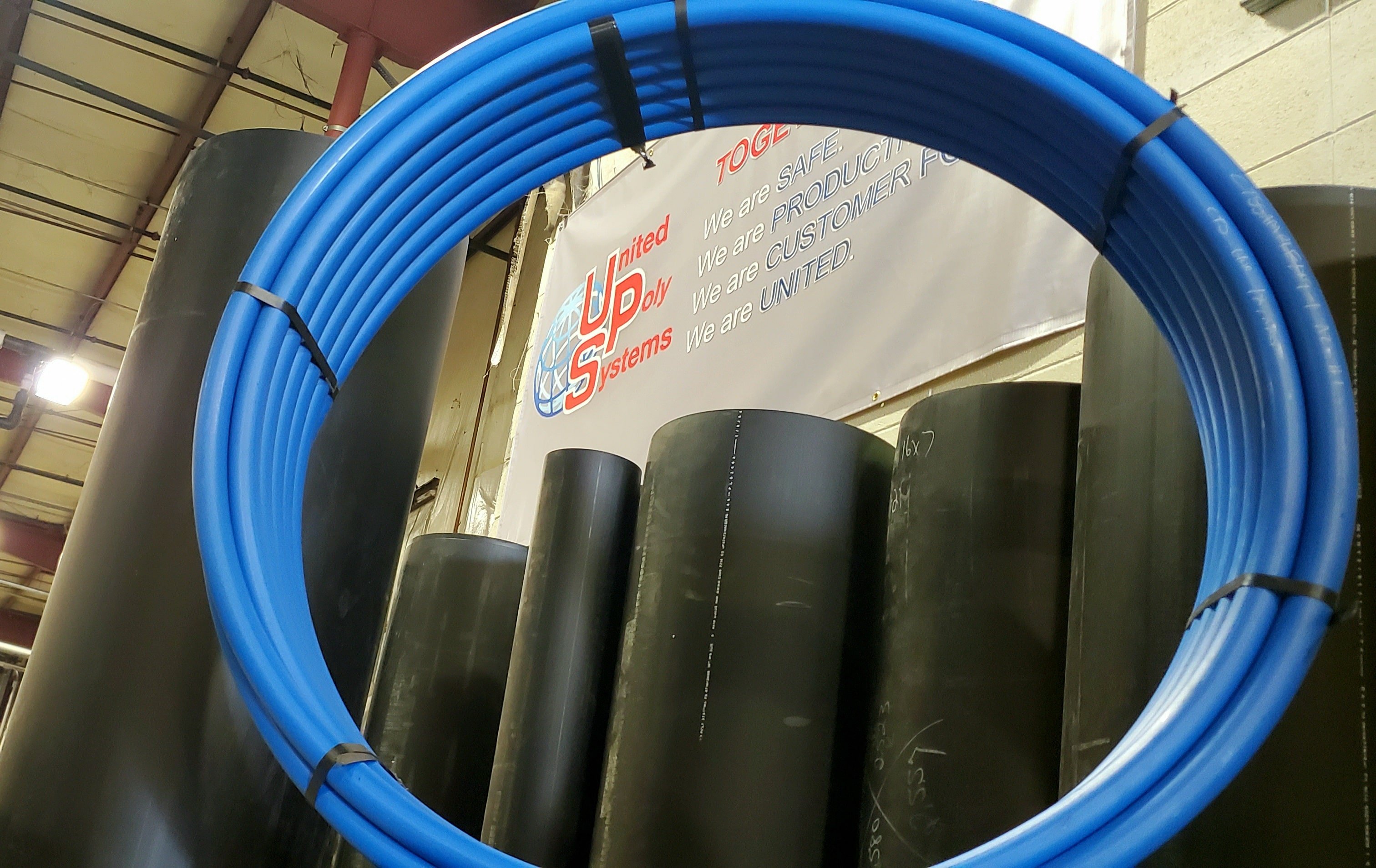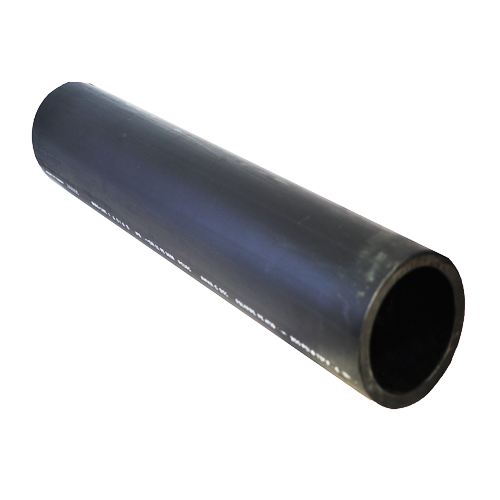American Plastics HDPE Pipe for Oilfield: Strength in Harsh Environments
Wiki Article
The Vital Steps for Successful Setup of HDPE Pipe in Your Next Job
Effective installation of HDPE pipeline requires careful planning and execution. Key actions include reviewing task requirements, preparing the site, and choosing proper signing up with techniques. Each phase plays an essential function in making sure the integrity and performance of the pipeline. Comprehending these essential steps can significantly affect the overall success of the task - Pipe Supplier American Plastics Midland. Nonetheless, the nuances of each action might hold the key to getting rid of usual obstacles encountered during installmentComprehending the Conveniences of HDPE Pipe
High-density polyethylene (HDPE) pipe supplies numerous benefits that make it a preferred choice for different applications. Its high resistance to rust and chemicals guarantees sturdiness sought after environments, significantly prolonging the life expectancy of installments. Additionally, HDPE's versatility enables easier installation, particularly in difficult terrains, as it can flex without breaking. The light-weight nature of HDPE pipeline simplifies transport and handling, reducing labor prices during setup.In addition, HDPE pipeline is understood for its low rubbing coefficient, which boosts fluid flow and minimizes power intake. Its seamless construction reduces the risk of leaks, adding to much better source administration and environmental protection. On top of that, HDPE is recyclable, lining up with sustainable practices and lowering ecological influence. In general, the combination of toughness, flexibility, and eco-friendliness makes HDPE pipeline an exceptional selection for a vast array of jobs, from water circulation to industrial applications.
Preparation Your HDPE Pipeline Setup
When intending an installation of HDPE pipeline, mindful factor to consider of a number of key variables is crucial to protect an effective task. Initially, project managers have to analyze the specific demands of the pipeline, consisting of the intended use, flow prices, and environmental problems. Understanding these specifications will certainly lead the choice of ideal pipe measurements and product grade.Next off, timelines ought to be developed, factoring in procurement routines and any type of possible hold-ups. Coordination with local authorities for permits and regulative conformity is likewise important. Additionally, a thorough budget plan must be prepared, including all costs connected with products, labor, and machinery.
Lastly, it is necessary to involve a certified team experienced in HDPE pipeline installation. Their know-how will certainly aid minimize threats, warranty adherence to market standards, and eventually add to the task's success. Complete planning lays the groundwork for a smooth installation procedure and lasting performance of the HDPE piping system.
Preparing the Site for Installation
Proper website prep work is essential for the effective setup of HDPE pipe. Prior to installment starts, the site needs to be extensively examined to guarantee it meets all essential needs. This consists of evaluating the ground for existing structures, energies, and possible risks that could hinder the setup procedure.

Appropriate altitude and placement need to be established to keep a regular slope for drainage purposes. Appropriate drain around the installment website is likewise vital to stop water accumulation, which can cause issues down the line.
Techniques for Signing Up With HDPE Pipelines
Achieving a dependable link between HDPE pipes is essential for guaranteeing the honesty and durability of the setup. Various methods exist for joining these pipelines, each suited for various project demands. Fusion welding is among the most typical methods, using heat to bond the pipe ends with each other, creating a smooth and sturdy connection. This strategy can be further categorized right into outlet fusion and butt fusion, relying on the pipe arrangements.Mechanical installations are another alternative, employing clamps and threaded connectors to sign up with areas of HDPE pipeline. While generally faster to mount, they might need extra maintenance with time. Electrofusion is a customized approach that entails using electrical present to warm and fuse the pipelines with particularly developed installations, guaranteeing a strong bond. Picking the appropriate joining strategy is important, as it directly impacts the overall performance and dependability of the HDPE piping system in the intended application.
Evaluating and Assessment of Installed Piping
The screening and inspection of installed HDPE pipes are important to ensuring their performance and longevity. This process encompasses aesthetic inspection techniques, stress testing techniques, and leak discovery treatments to determine potential concerns. By utilizing these approaches, specialists can validate the honesty of the installment prior to it is placed into usage.Visual Inspection Techniques
Utilizing effective visual assessment strategies is important for guaranteeing the stability of mounted HDPE pipelines. Inspectors must systematically examine all noticeable areas of the pipeline to determine any type of signs of damages, misalignment, or improper setup. Key indicators to examine include joint integrity, surface irregularities, and links. Inspectors might make use of devices such as amplifying glasses or cams to enhance presence and detail. It is vital to look for signs of environmental tension, such as distorting or excessive bending, which can jeopardize efficiency. Consistent documents of findings enables tracking adjustments over time and aids overview needed fixings. By sticking to recognized aesthetic evaluation protocols, task teams can especially reduce the danger of future failures and guarantee long-lasting integrity of the piping system.Stress Evaluating Techniques
Aesthetic inspection works as an initial measure, yet it is not enough by itself to ensure the efficiency of mounted HDPE pipelines. Stress testing approaches are important for guaranteeing the honesty of these systems. Usually, hydrostatic screening is employed, where the pipelines are full of water and based on stress levels above the intended operating pressure. This method helps identify weak points or possible leakages. Pneumatically-driven testing can additionally be utilized, although it brings higher risks as a result of the compressibility of air. No matter the approach selected, sticking to industry criteria and security methods is essential. After performing stress tests, complete paperwork is needed to verify the outcomes and validate that the installation fulfills all operational requirements before continuing to the following stage of the task.
Drip Discovery Treatments
Just how can one assure that installed HDPE pipes are devoid of leaks? Efficient leak discovery treatments are essential to safeguard the stability of the system. Originally, aesthetic assessments need to be carried out, looking for indicators of water build-up or soil disintegration around pipeline joints. Following this, stress testing can verify the system's strength. A common method is the hydrostatic test, where water is introduced under stress, keeping track of for decreases that suggest possible leakages. In addition, advanced modern technologies, such as acoustic sensing units or infrared thermography, can find leaks that might not be visible. Routine tracking and maintenance more contribute to the longevity of HDPE pipes, ensuring they stay leak-free throughout their functional life-span. Appropriate documents of these procedures is vital for conformity and future reference.Maintenance Tips for Long-Term Performance
To assure the long life of HDPE pipelines, establishing a normal assessment timetable is essential. This proactive method allows for the very early discovery of prospective problems, reducing expensive fixings. Furthermore, carrying out correct cleaning strategies will certainly aid maintain peak efficiency and avoid buildup that can influence functionality.Routine Inspection Schedule
Although HDPE pipes are recognized for their toughness and resistance to rust, developing a routine assessment schedule is necessary for ensuring their long-term efficiency. Regular inspections aid recognize prospective problems such as leakages, joint stability, and ecological effects that may influence the pipeline's performance. It is recommended that assessments happen a minimum of biannually, or extra frequently in settings with severe problems. Pipe Supplier American Plastics Midland. Throughout these assessments, aesthetic checks should be conducted to find indications of wear or damages. Furthermore, using innovation such as ultrasonic testing can provide more insights into the pipeline's problem. By executing an organized examination timetable, job managers can proactively resolve troubles, therefore prolonging the life-span of HDPE pipelines and preserving system effectivenessAppropriate Cleansing Techniques
Appropriate cleaning techniques play a crucial function in preserving the long-term performance of HDPE pipelines. Normal cleansing avoids the build-up of particles, debris, and biofilm, which can result in blockages and decreased flow effectiveness. Operators must employ approaches such as high-pressure water jetting or foam cleaning to efficiently get running gas line rid of pollutants without harming the pipeline surface area. It is important to stay clear of using severe chemicals that might break down HDPE material. Furthermore, set up maintenance checks ought to consist of visual inspections for any kind of indications of wear or damage. Properly educated personnel must accomplish these cleansing procedures, making sure conformity with security and environmental laws. By applying these practices, the life expectancy of HDPE pipes can be greatly extended, making certain suitable efficiency throughout their functional life.Regularly Asked Inquiries
What Are the Ecological Effects of HDPE Pipe Manufacturing?
The ecological influences of HDPE pipe production consist of greenhouse gas discharges, power consumption throughout production, possible plastic contamination, and obstacles in reusing. HDPE's durability and resistance to deterioration can mitigate some ecological issues.How Does HDPE Pipeline Contrast to Other Products?

What Tools Are Necessary for HDPE Pipeline Installation?
Vital devices for HDPE pipe installation include a blend maker, pipeline cutters, shovels, measuring tape, and safety equipment. Correct equipment assurances efficient, risk-free handling and setup, contributing to the task's overall success and integrity.Are There Any Details Rules for HDPE Pipe Installment?
Certain regulations for HDPE pipe installation differ by area, typically controlled by neighborhood, state, or government codes. Conformity with these guidelines assurances security, environmental management, and capability, making adherence crucial for effective job end results.Can HDPE Pipeline Be Recycled After Usage?
Yes, HDPE pipes can be reused after usage. Their thermoplastic nature permits reprocessing, making them suitable for reusing into new products. This sustainability aspect adds to ecological preservation and promotes round economic situation techniques in building.Report this wiki page